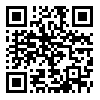دوره 1، شماره 1 - ( 4-1403 )
جلد 1 شماره 1 صفحات 46-33 |
برگشت به فهرست نسخه ها
Download citation:
BibTeX | RIS | EndNote | Medlars | ProCite | Reference Manager | RefWorks
Send citation to:



BibTeX | RIS | EndNote | Medlars | ProCite | Reference Manager | RefWorks
Send citation to:
Nourozian S M. (2024). Developing Practical HEKMAT in Iranian Schools: A Theoretical and Practical Approach. SELMJ. 1(1), 33-46.
URL: http://selmj.ir/article-1-34-fa.html
URL: http://selmj.ir/article-1-34-fa.html
نوروزیان سید محمد.(1403). در جستجوی حکمت: دگرگونیهایی در فلسفه مدیریت آموزشی دانش پژوهی در رهبری و مدیریت آموزشی 1 (1) :46-33
دکترای مدیریت آموزشی
چکیده: (837 مشاهده)
این مقاله به بررسی پیوندهای میان مولفههای حکمت و علم مدیریت آموزشی پرداخته و تلاش میکند تا از طریق تحلیلهای مفهومی و استنتاجی، نقش این مولفهها در شکلگیری و پیشبرد راهبردهای مدیریت آموزشی را نمایان سازد. به منظور دستیابی به این هدف، از ترکیب دو روش تحلیل مفهومی(مفهومپردازی) برای درک عمیق مفاهیم مطرح شده، و روش استنتاجی برای تبیین اهداف و ملاحظات کلی پژوهش بهره گرفته شده است. یافته های این مقاله با تمرکز بر پنج حوزه اصلی حکمت(منطق، شناختشناسی، متافیزیک، اخلاق، و زیباییشناسی) و مقابله آنها با پنج مولفه کلیدی علم مدیریت آموزشی(مفهومسازی و پارادایمها، روششناسی تحقیق، تئوری دانش و معرفتشناسی، اخلاق و مسئولیت اجتماعی، و فلسفه علمی و پیشرفتهای نظری) به شناسایی چگونگی تأثیرگذاری متقابل این دو حوزه بر یکدیگر و امکان ادغام آنها در جهت بهبود نظر و عمل مدیریت آموزشی پرداخته است. نتایج حاصل از این تحلیل میتوانند به توسعه چارچوبهای نظری جدید در علم موجود کمک کنند که نه تنها علمی و کارآمد هستند، بلکه بهطور عمیقی به ارزشهای اخلاقی و فلسفی پایبندند.
فهرست منابع
1. Audi, R. (1999). The Cambridge Dictionary of Philosophy. Cambridge University Press.
2. Bourdieu, P. (1977). Outline of a Theory of Practice. Cambridge University Press. [DOI:10.1017/CBO9780511812507]
3. Creswell, J. W. (2014). Research Design: Qualitative, Quantitative, and Mixed Methods Approaches. Sage.
4. Heidegger, M. (1927). Sein und Zeit. Niemeyer.
5. Kuhn, T. S. (1962). The Structure of Scientific Revolutions. University of Chicago Press.
6. MacIntyre, A. (1984). After Virtue: A Study in Moral Theory. University of Notre Dame Press.
7. Noddings, N. (1984). Caring: A Feminine Approach to Ethics and Moral Education. University of California Press.
8. Nussbaum, M. (1986). The fragility of goodness: Luck and ethics in Greek tragedy and philosophy. Cambridge: Cambridge University Press.
9. Polanyi, M. (1966). The Tacit Dimension. University of Chicago Press.
10. Scarry, E. (1999). On Beauty and Being Just. Princeton University Press. [DOI:10.1515/9781400847358]
11. Schwartz, B., & Sharpe, K. (2006). Practical wisdom: Aristotle meets positive psychology. Journal of Happiness Studies, 7(3), 377-395. DOI: 10.1007/s10902-005-3651-y [DOI:10.1007/s10902-005-3651-y]
12. Sternberg, R. J. (1998). A balance theory of wisdom. Review of General Psychology, 2(4), 347-365. [DOI:10.1037/1089-2680.2.4.347]
13. Tillers, P., & Green, E. (Eds.). (2010). Empirical methods in law: A handbook.
ارسال پیام به نویسنده مسئول
| بازنشر اطلاعات | |
 |
این مقاله تحت شرایط Creative Commons Attribution-NonCommercial 4.0 International License قابل بازنشر است. |




